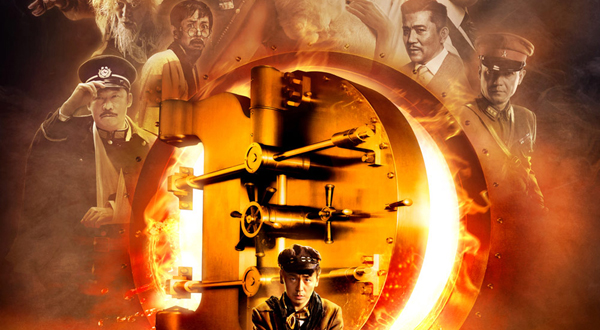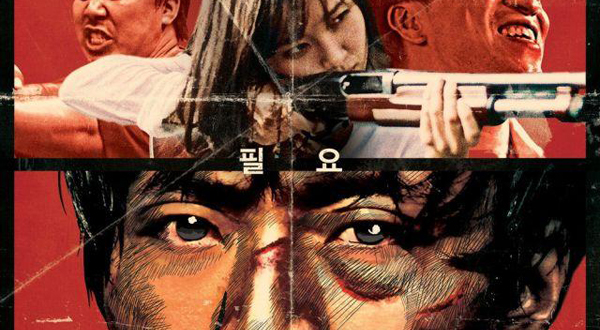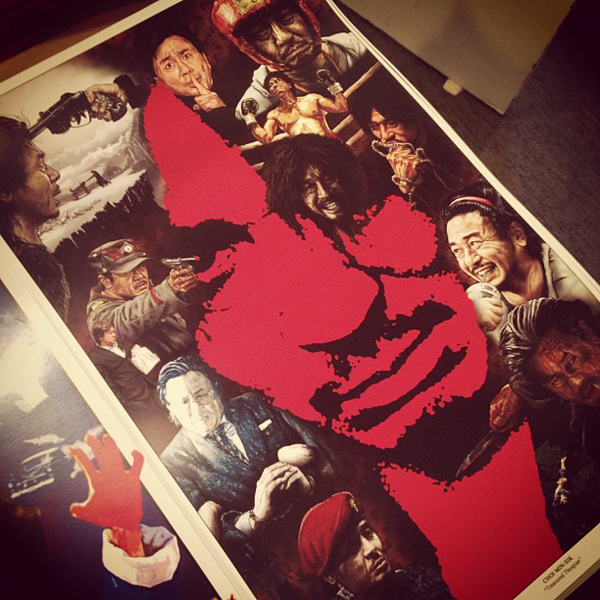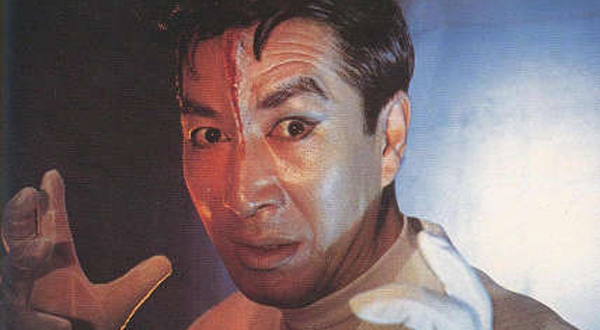My New York Asian Film Festival coverage continues with three brand new reviews: the ultimate mash-up of genres from China, the creation of something entirely new from Taiwan, and tired Korean staple getting a much needed shot in the arm?
Guns N’Roses

The NYAFF’s centerpiece presentation this year has nothing to do with the band of the same name, though it is director Ning Hao’s favorite musical act. So instead of it being about rock stars Axel Rose or Slash, the star of the show is a con man by the name of Xiao Dunbei. Who does whatever he feels is necessary to scrape by during desperate times, which is the 1930s. And the place is Manchukuo, a puppet state within China being controlled by the occupying Japanese army during World War 2. So things are indeed crappy, to the point that pretty much everyone has the same dog eat dog attitude that dictates Xiao’s motivations and actions. Anyhow, a whirlwind of events kicks off when our so called hero, after robbing a pair of dirt poor children (the guy has zero shame), is tossed into jail for the umpteenth time. There he meets an imprisoned revolutionary who has the inside track on a massive shipment of gold. Not long after, Xiao comes across the aforementioned radical’s associates, who are posing as filmmakers. Their goal is to hijack the loot, to prevent it from being used to purchase weapons that will further downtrodden their brothers and sisters. But Xiao could give a rat’s ass about Chinese democracy; he just wants a piece of the cash prize. Despite not having a single patriotic bone in his body, the movie people reluctantly bring him on board anyway, which serves as both the best and worst decision ever.
By this point we’re introduced to a host of additional players; there’s Xiao’s dad, who claims to be a martial arts master but is now just an eccentric old fool who lives in the sewers. Then there’s Xixi, the daughter of the banker that’s connected to aforementioned arms deal that the good guys are trying to prevent and part of a social strata that Xiao has only dreamt about. Plus Yamasaki, the primary villain, who is clearly modeled after Hans Landa from Inglourious Basterds. It’s like his Japanese cousin or something. And who is the ultimate embodiment of the heinous attitudes that the Imperial Japanese had towards the lowly Chinese. It doesn’t take long before the narrative goes into overdrive, with a dizzying amount of twists and turns. Ultimately, Guns N?Roses is two movies in one: a tightly constructed heist flick and the classic from hero to zero tale. Each core element has its own supporting threads, which brilliantly twist and turn, often with the other side whenever necessary. Though the latter of the two is where most of the risks are taken; Xiao is flat out despicable early on (to the point that I practically couldn’t stand the character, and almost made the mental decision to not care what was happening on the big screen). But it makes his path of self-salvation all the more powerful in the end.
Guns N?Roses is playing twice: first is later tonight, Saturday July 7 at 9pm, and this upcoming
Tuesday July 10 at 1:30pm, both at Lincoln Center.
Honey Pupu

Honey Pupu has been on my radar ever since its release last year, mostly due to the sharply divided reactions among those who have seen it. Some consider it pretentious, Wong Kar-wai wannabe drivel, while others hail it as a daring piece of visual poetry, a cinematic voice at long last for the current generation of kids that have been raised on the internet. Its inclusion in the aforementioned “Warriors and Romantics: the New Cinema from Taiwan” program is appropriate. Because in every burgeoning movement, there will be experimentation, and the end result is not always going to hit the mark, which is the case here. At the center of it all is three young people, who go by their internet handles IRL: Assassin is super cool, but hot headed. Money is his equally stylish girlfriend, who is obsessed with people and things disappearing. Caught in the middle is Cola, who starts out as buds with Assassin, but that falls apart once he starts spending too much time with his gf. Thing is, they both shares the same interest; Cola likes to draw things that no longer exists.
Anyhow, all three spend equal amounts of time together online as well. On a site that used to be frequented by someone named Dog, who himself is now missing. Enter Vicky, who aside from being a rather morose radio personality and the only character to use her actual name, is trying to track her ex-bf down. So is someone named Cat. Eventually, the three kids find themselves involved in the hunt. For all intents and purposes, Honey Pupu is a love letter addressed to today’s youth, embodying all the feelings of fear, confusion, contempt, and wonder that it has for a world that’s constantly changing, and which was never fully welcoming in the first place. Via 140 character increments. There’s not much action or story to speak of, just young people aimlessly drifting about, being all idealistic and stupid and stuff. It tries hard to be profound, yet stumbles quite a bit. The end result is not exactly pretentious, but will most certainly cause some eyes to roll. Just like actual young people? But the movie has its heart in the right place, which is what matters the most.
And yeah, it is as if someone who is a huge Wong Kar-wai fanboy or fangirl, who pays tribute in the form of a Tumblr, was all of a sudden handed a camera to make a movie of their own. If that sounds interesting to you, there next screening is tomorrow night, Sunday July 8 at 10:30pm, at Lincoln Center.
Bloody Fight in Iron-Rock Valley

After something as heady and arty-farty as Honey Pupu, I needed something plain and simple, to cleanse the pallet. And Bloody Fight in Iron-Rock Valley was just that. It’s also the breath of fresh air that Korean revenge flicks desperately needs right about now. Though you’ll rarely find a movie that is all at once so abstract and straightforward, regardless of nation of origin. Plus, it’s right up the alley for anyone who is a fan of Sergio Leone’s spaghetti westerns. The plot here is just as stripped down and utilitarian as his classics starring Clint Eastwood. In fact, the hero in this instance is called literally Mr. No Name, who I guess is The Man with No Name’s cousin from Seoul of something. Anyway, Mr. No Name is a dude who has just gotten out of prison. The only thing he takes with him, back into society, is a music box containing a dancing ballerina, and book that’s basically a checklist. In no time flat, he’s knocked off two people: Cutter, a bad guy who surprisingly uses a flame thrower to kill someone (like people in No Name’s past), and a crooked cop. Both were associates of a man who operates a crooked construction company, and next on Mr. No Name’s list is the brutish Axe and the super cunning Ghostface.
Their latest mission is to rid a sleepy little town in the mountains of all of its inhabitants, who are all peace loving monks; the land its on is earmarked for development, provided that it’s emptied out in time. Which, naturally, No Name stumbles across on his bike, while on his mission for revenge. Eventually, everyone in town is wiped out, except the “daughter” of the head monk. Who took pity on her, and was the only one to recognize that she was just a by-product of all the gambling and associated vices that had befallen the neighboring towns (which is the evil mogul’s primary method of seizing real estate). Along with the help of a friendly woodsman, No Name manages to finish off Axe and eventually it’s a duel with Ghostface, along with the story behind his moniker, which has something to do with a heinous act that he did to No Name’s loved one in the distant past. Bloody Fight in Iron-Rock Valley is as stripped down and utilitarian as movies can possibly be (the title alone should be enough of a clue). But director Ji Ha-Jean’s workmanlike approach makes No Name’s path of destruction, and all violence that he both endure and unleash, all the more jarring.
BTW: Ghostface is one of the most flat out, purely evil sons of bitches in recent memory. Not an ounce of charm or likability to speak of, so the anticipation of him finally getting his is worth the price of admission alone. Ultimately, the movie is as perfect a combination of Fistful of Dollars and Oldboy as they come. You have two screenings to choose from; tomorrow afternoon, Sunday July 8 at 12:30pm, and Thursday July 12 at 3:30pm.






